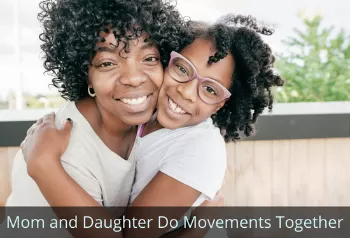Primitive Reflex Integration Case Studies
Teen Reports Less Anxiety, Is Now Making Friends
Submitted by K.S., Occupational Therapist

| Before | After |
|---|---|
| Anxious | Less anxious |
| Struggled with social situations | Participating in get togethers with friends |
| Fidgety | Less fidgety; more comfortable in her body |
| Impulsive | Less impulsive |
| Frequently argumentative with parent | Butting heads with parent much less often |
My 13-year-old daughter, Renee, struggles with ADHD, anxiety. She’s always been highly sensitive in many of her senses…auditory, smell, sight, proprioceptive. She has been drawn to horses since she was 3 and rides horses and spends time at the barn a few times a week. The last year she has struggled more with anxiety with social/relational things with her friends. Before our working on these movements, she was fidgety, nervous, expressing worry about school day ahead and often argumentative with me. Her riding instructor is struggling with Renee listening to her and Renee not being accountable and responsible for her duties at the barn.
Duration: 6 weeks and counting…She and I get up at 6am to do the Brain tune up, rhythmic movements (RM) and reflex exercises [from the Brain and Sensory Foundations course] for 20-30 min. daily. She will also do these movements on her own throughout the day. We slowly built from 1-4 rhythmic movements. The first day of RM she started crying and it surprised her even though I had told her it could happen. The following days no more emotional outbursts from RM. Renee was apprehensive if these exercises would help her, but she was ok to try.
After 1 week of just doing the Brain Tune up and RM, she felt and I observed her less anxious in the mornings before school.
We started in on TLR [Tonic Labyrinthine Reflex], FPR [Fear Paralysis Reflex], MORO [reflex], ATNR [Asymmetrical Tonic Neck Reflex], Spinal Galant as she’s really sensitive/ ticklish around her waist, how her clothes fit on her waist. STNR & Babkin’s exercises were also incorporated.
We slowly added from 1 exercise to many and changed up how we stimulate each reflex. I do isometric activities for each reflex [from the Brain and Sensory Foundations course] and then another activity. She’s had great improvements.
Results of her treatment: Renee verbalizes that she feels less anxious, more fluid in her body movement which feels better to her and how she operates throughout her day. I observe her to be less fidgety, impulsive, anxious throughout her days. Just 2 weeks ago, she requested a friend from school to come over to our home and then she had fun at the same girl’s house a few times since. This is huge because she has not felt safe around many kids her age and part of it is the middle school age, but I now believe it was her immaturity of her brain/system and experiencing being in fight/flight unsafe mode at all times which made doing anything else that she considered risky to her safety, she could not handle. What a great change. She feels more secure in her horse riding as she’s in the saddle going over low jumps and her instructor reports she’s been better tuned in to her horse and what the instructor tells her. Just overall, I observe she’s much more comfortable in her body and it’s evident and amazing! She and I don’t butt heads nearly as often and I’m sure it’s due to both of us doing the RM and exercises. [from the Brain and Sensory Foundations course]. So many great things.
Grateful for this program!!
[Edited, emphasis added Article_content]
*Disclaimer: The activities in the Brain and Sensory Foundations curriculum make use of the natural processes of neuroplasticity and development that are innately wired in the design of human beings to promote maturity and function. These activities appear to calm, organize, and mature the neuro-sensory-motor systems just as we see in the healthy development of human infants. Individual results may vary, and we do not claim to offer a diagnosis or cure for any specific condition or disorder. The Brain and Sensory Foundations activities appear to improve overall functioning resulting in measurable improvements for a range of conditions as demonstrated in over 1800 case studies from participants.

